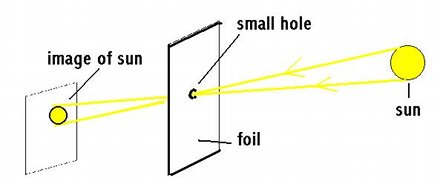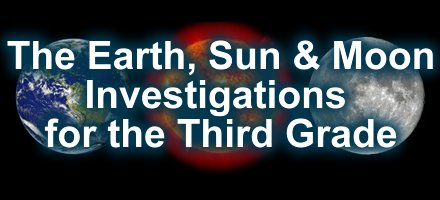
Learning Outcomes

North Carolina State Standards
NC Standard Course of Study:
Science Objectives:
Competency Goal 3: The learner will make observations and use appropriate technology to build an understanding of the earth/moon/sun system.
3.05 Observe and record the change in the apparent shape of the moon from day to day over several months and describe the pattern of changes.
3.06 Observe that patterns of stars in the sky stay the same, although they appear to move across the sky nightly.
Excerpted from the North Carolina Public Schools Department of Instruction’s Standard Course of Study on the web at http://www.ncpublicschools.org/curriculum/science/scos/2004/15grade3
Mathematics Objectives:
3.01 Use appropriate vocabulary to compare, describe, and classify two- and three-dimensional figures.
2.01 Solve problems using measurement concepts and procedures involving: Elapsed time and equivalent measures
4.01 Collect, organize, analyze, and display data (including circle graphs and tables) to solve problems.
5.01 Describe and extend numeric and geometric patterns.
5.02 Extend and find missing terms of repeating and growing patterns.
1.05 Use area or region models and set models of fractions to explore part-whole relationships.
1.05 Compare and order fractions (halves, fourths, thirds, sixths, eighths) using models and benchmark numbers (zero, one-half, one); describe comparisons.
English Language Arts Objectives:
2.01 Use metacognitive strategies to comprehend text (e.g., reread, read ahead, ask for help, adjust reading speed, question, paraphrase, retell).
2.02 Interact with the text before, during, and after reading, listening, or viewing by: setting a purpose, previewing the text, making predictions, asking questions, locating information for specific purposes, making connections, using story structure and text organization to comprehend.
2.05 Draw conclusions, make generalizations, and gather support by referencing the text.
4.02 Use oral and written language to present information in a sequenced, logical manner, discuss, sustain conversation on a topic, share information and ideas, recount or narrate, answer open-ended questions, report information on a topic, explain own learning
2.02 Identify and discuss similarities and differences in events, characters, concepts and ideas within and across selections and support them by referencing the text.
3.03 Use text and own experiences to verify facts, concepts, and ideas
3.05 Analyze, compare and contrast printed and visual information (e.g., graphs, charts, maps).
United States National Standards
National Science Content Standards: K-4
- Science as Inquiry:
- Ask a question about objects, organisms and events in the environment.
- Plan and conduct a simple investigation
- Employ simple equipment and tools to gather data and extend the senses
- Use data to construct a reasonable explanation.
- Communicate investigations and explanation
- Physical Sciences:
- Properties of objects and materials
- Position and motion of objects
- Light
- Earth and Space Science:
- Properties of earth Materials
- Objects in the sky
- Changes in the earth and sky
Excerpts from National Science Education Standards by National Committee on Science Education Standards and Assessment, National Research Council found at http://www.nap.edu/readingroom/books/nses/6c.html#ps

